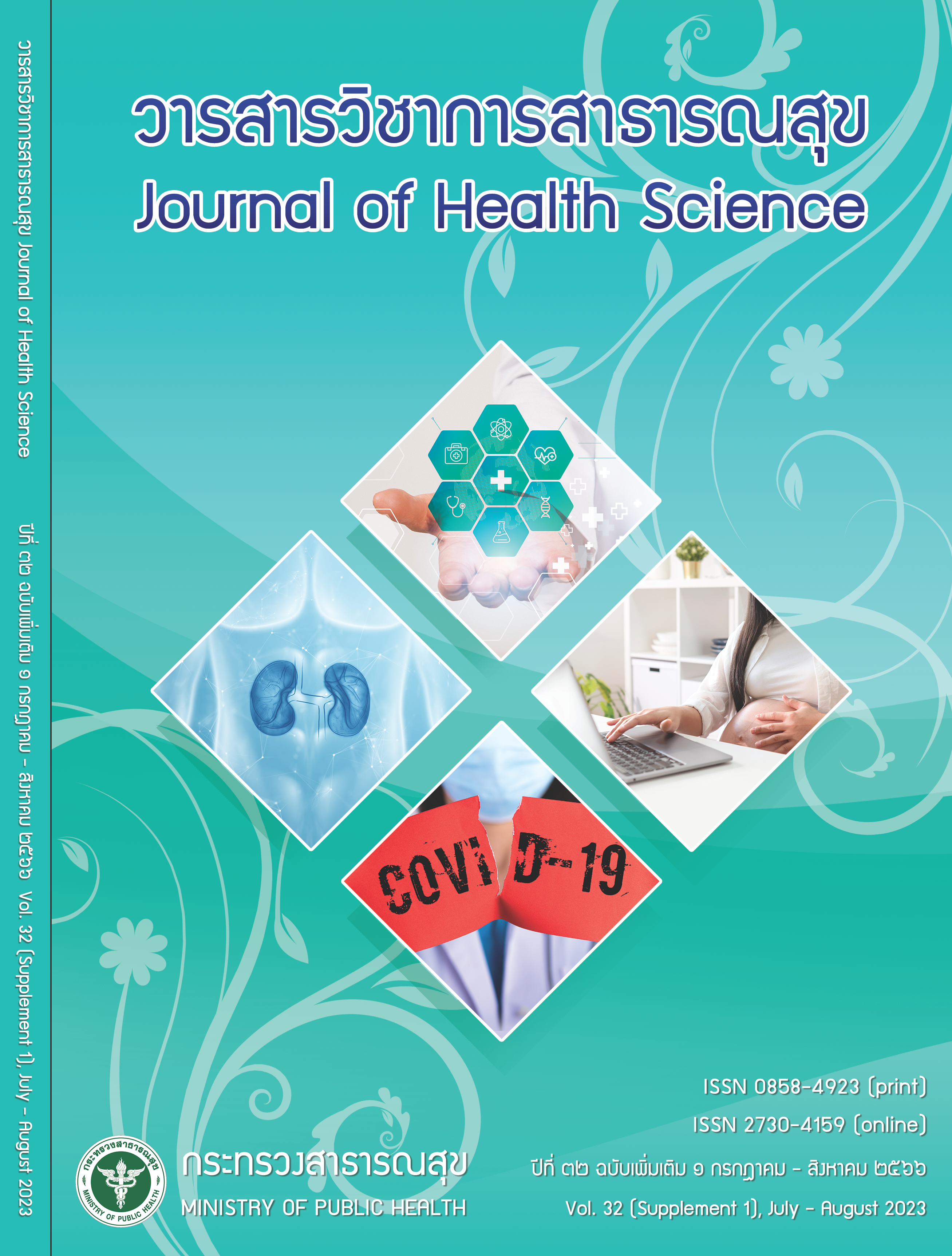Development of a Care Model for High-Risk Pregnant Women in the Digital Transformation Era
Keywords:
model development, high-risk pregnancy care, digital transformation eraAbstract
The objectives of this study were to develop and evaluate the effectiveness of a care model for high-risk pregnant women in the age of digital transformation. It was designed as a research and development study involving high-risk pregnant women attending antenatal services at Pakkred Hospital, Nonthaburi Province, from August to November 2022. The research was conducted in two distinct phases: the phase 1 was on model development which included assessing the current scenario and observing the environment dedicated to high-risk pregnancy care. Comprehensive interviews were conducted by a multi-disciplinary team with the high-risk pregnant women. The Standford d.school’s design thinking process was applied in the process. A hospital committee was formed to develop the model through facilitated group discussions aiming at refining the model prior to its actual implementation. The phase 2 was on the evaluation of the model efficacy in which we assessed the knowledge of high-risk pregnant women participating in the project, specifically their understanding and practices before and after utilizing the model; and recorded all complications that arose during their participation. In adddition, we evaluated their satisfaction levels post-usage. The tools implemented in this research include a record form on highrisk pregnancy knowledge and practice evaluation to prevent complications during pregnancy. Data were analyzed by using descriptive statistics and paired samples t-test. It was found that post-adoption of the model, the high-risk pregnant women showed significantly improved knowledge scores. Their self-care practices for preventing complications during pregnancy were significantly enhanced compared to the pre-model implementation phase (p<0.001). The participating high-risk pregnant women demonstrated a high level of satisfaction.
Downloads
References
World Health Organization. Trends in maternal mortality 2000 to 2017: estimates by WHO, UNICEF, UNFPA, World Bank Group and the United Nations Population Division. Geneva: World Health Organization; 2019.
กองตรวจราชการ กระทรวงสาธารณสุข. แผนการตรวจราชการกระทรวงสาธารณสุข ประจำปี งบประมาณ 2564 [อินเทอร์เน็ต]. [สืบค้นเมื่อ 7 ส.ค. 2565]. แหล่งข้อมูล: https:// ops.moph.go.th/public/index.php/pol icy_plan
กองยุทธศาสตร์และแผนงาน สำนักงานปลัดกระทรวงสาธารณสุข. นโยบายมุ่งเน้นกระทรวงสาธารณสุขประจำปี 2566 ของ นพ. โอภาส การย์กวินพงศ์ ปลัดกระทรวงสาธารณสุข [อินเทอร์เน็ต]. [สืบค้นเมื่อ 8 ส.ค. 2565]. แหล่ง ข้อมูล: https://spd.moph.go.th/2023-focus-policy/
ปณิตา ปรีชากรกนกกุล, ณัชชา วรรณนิยม, พนิดา รัตนเรือง.ผลของการตั้งครรภ์ในสตรีตั้งครรภ์อายุมากที่มาคลอดใน โรงพยาบาลมหาราชนครราชสีมา. วารสารโรงพยาบาลสกลนคร 2561;21:1-9.
Hasso Plattner Institute of Design at Stanford University. Get started with design thinking [Internet]. [cited 2022 Aug 8]. Available from: https://dschool.stanford.edu/ resources/getting-started-with-design-thinking
Bloom BS, Engelhart MD, Furst EJ, Hill WH, Krathwohl DR. Taxonomy of educational objectives, handbook I: the cognitive domain. New York: David McKay; 1956.
นุชจรี กิจวรรณ. กระบวนการคิดเชิงออกแบบ: มุมมองใหม่ ของระบบสุขภาพไทย. วารสารสภาการพยาบาล 2561; 33(1):5-14.
รตินันท์ เตชะสืบ. ผลของการตั้งครรภ์ในมารดาอายุมากที่ โรงพยาบาลสุโขทัย. พุทธชินราชเวชสาร 2553;27(1):323- 4.
จารินี คูณทวีพันธุ์, ระวีวัฒน์ นุมานิต, อนุรักษ์ กระรัมย์. ผล การพัฒนาแบบคัดกรองหญิงตั้งครรภ์ที่มีภาวะครรภ์เสี่ยงสูง ในเครือข่ายบริการสุขภาพจังหวัดบุรีรัมย์. วารสารวิชาการกรมสนับสนุนบริการสุขภาพ 2562;15:49-57.
ช่อทิพย์ ผลกุศล, ศิริวรรณ แสงอินทร์. ความสัมพันธ์ระหว่าง ปัจจัยส่วนบุคคล การรับรู้ภาวะเสี่ยงของการตั้งครรภ์ และ พฤติกรรมสุขภาพของสตรีตั้งครรภ์อายุมาก. วารสารคณะพยาบาลศาสตร์ มหาวิทยาลัยบูรพา 2564;29(2):24-34.
Janz MK, Becker MH, Hartman PE. Contingency contracting to enhance patient compliance: a review. Patient Educ Couns 1984;5(4):165-78.
Downloads
Published
How to Cite
Issue
Section
License

This work is licensed under a Creative Commons Attribution-NonCommercial-NoDerivatives 4.0 International License.







